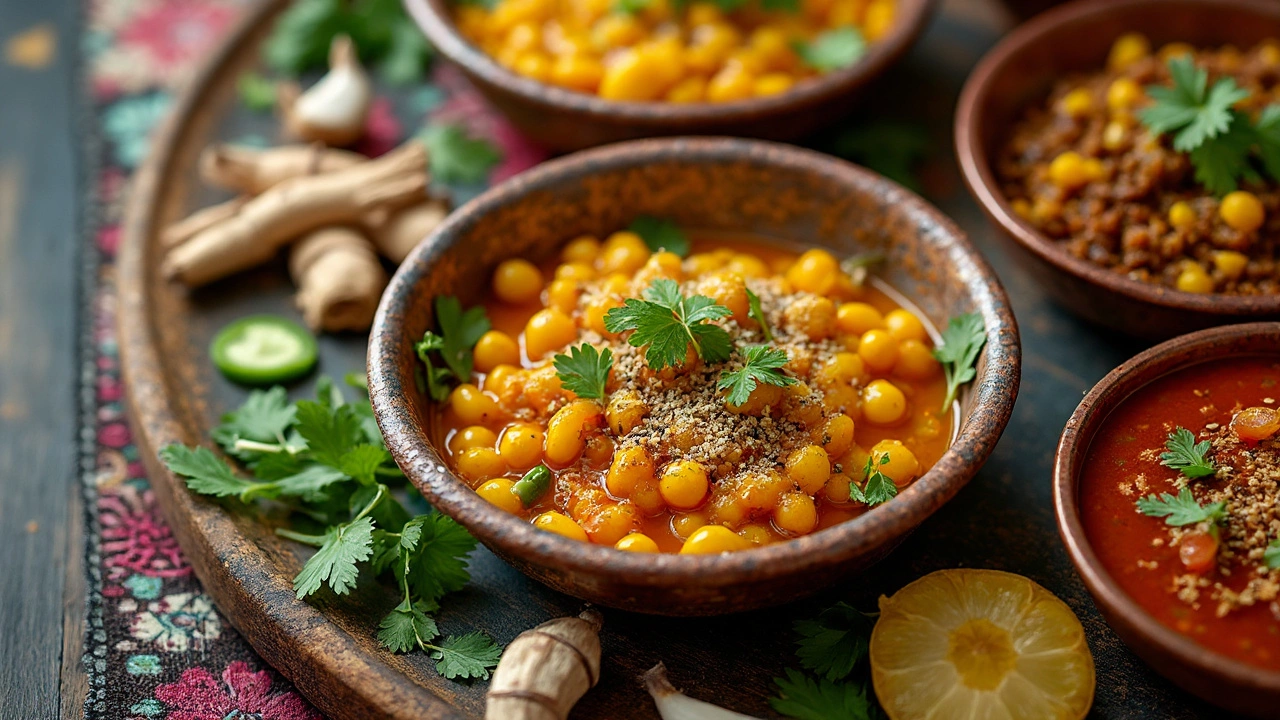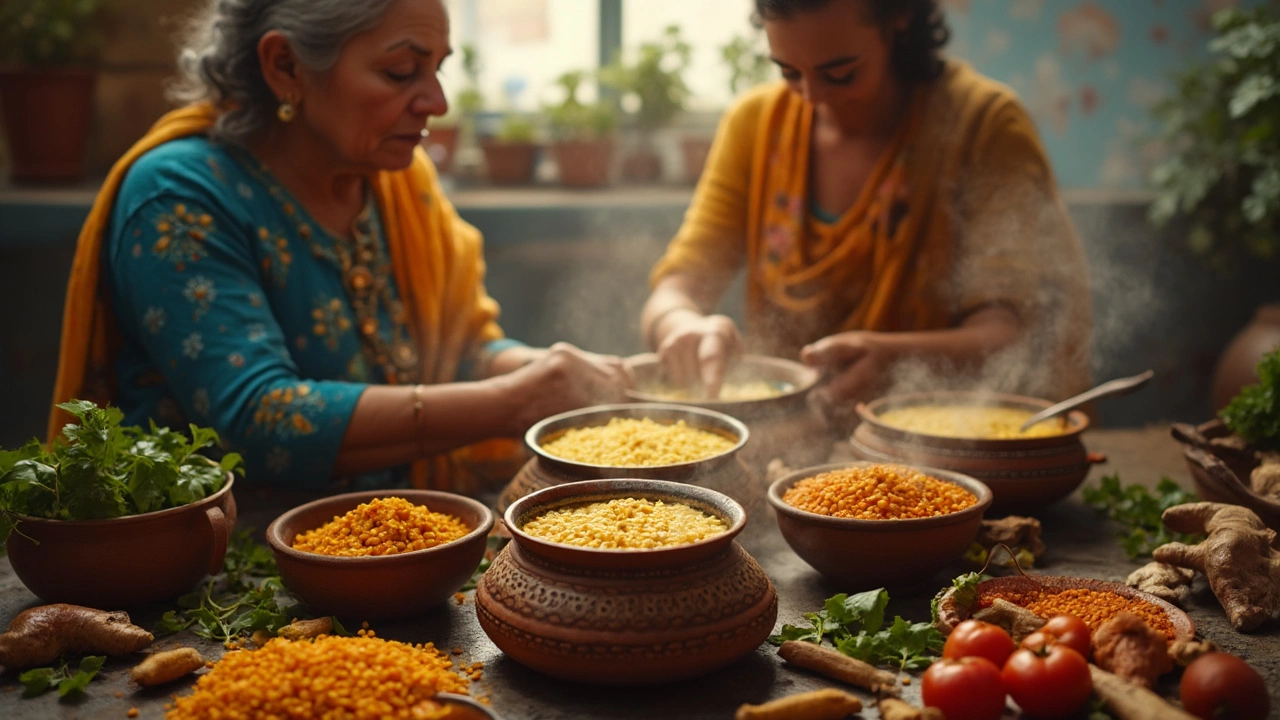If you ever wondered if your bowl of daal is more than just comfort food, you're not alone. People keep asking if daal might actually help with inflammation. Here’s the deal: our bodies deal with inflammation all the time—sometimes that’s good, like fighting off germs, but chronic inflammation is linked to aches, fatigue, and bigger health issues.
Lentils, the main heroes in daal, bring more to the table than just protein and taste. They carry fiber, magnesium, and crazy-high levels of antioxidants that might actually put the brakes on inflammation inside you. But is eating daal enough to make a real difference? And are all types the same?
Grab your pressure cooker or saucepan—because by the time you finish reading, you’ll understand if daal belongs on the frontlines of an anti-inflammatory diet, and how you can cook it to get the most out of every spoonful. Turns out, what you add and how you make daal can seriously level up those health perks!
- What Exactly Is Inflammation?
- Daal’s Nutritional Superpowers
- How Daal Fights Inflammation
- Cooking Tips: Making Your Daal Even Healthier
- Simple Ways to Eat More Daal Daily
What Exactly Is Inflammation?
Inflammation is like your body’s internal fire alarm. When you stub your toe, catch a cold, or even eat something bad, your body jumps into action. Redness, swelling, or that super sore feeling? That’s inflammation at work. It’s your immune system sending out white blood cells to protect and repair.
There are two main types of inflammation:
- Acute inflammation: This happens suddenly and usually lasts a few days. Think of it as your body’s first response to an injury or infection—like when you get a paper cut or a sore throat.
- Chronic inflammation: This type drags on for months or even years. It’s less obvious but can be sneaky, quietly damaging cells and tissues. Chronic inflammation is tied to bigger health problems like arthritis, diabetes, and heart troubles.
So, what brings on chronic inflammation? Everyday stuff like lack of exercise, eating ultra-processed foods, too much sugar, or even constantly being stressed can play a role.
Just to get a clearer picture, check out this quick breakdown of what can affect inflammation in the body:
| Factor | Worsens Inflammation? | Helps Reduce Inflammation? |
|---|---|---|
| Deep-fried foods | Yes | No |
| Physical activity | No | Yes |
| Smoking | Yes | No |
| Eating whole foods (like daal) | No | Yes |
Understanding inflammation is key if you want to use food, like dal, to help keep it under control. Making little swaps in your daily routine and diet can actually make a major difference.
Daal’s Nutritional Superpowers
When people rave about daal, they’re not just talking about taste. The nutrition inside that humble bowl is seriously impressive, especially if you’re trying to eat for health. Most daals—think masoor, moong, toor, or chana—are packed with protein and are naturally low in fat. Plant-based eaters love daal because it has about 9 grams of protein per 100 grams cooked. That’s enough to help keep you full and keep your muscles happy.
Fiber is another big deal here. A simple serving of cooked daal dishes out about 8 grams of fiber—and that’s huge for your gut. High fiber helps balance blood sugar and feeds the good bacteria in your stomach, which is key for reducing inflammation.
Here’s a quick look at what you’re actually getting in a regular portion (approx. 100 grams cooked):
| Nutrient | Amount |
|---|---|
| Protein | ~9g |
| Fiber | ~8g |
| Iron | ~3.3mg |
| Folate (B9) | ~181mcg |
| Magnesium | ~36mg |
| Calories | ~100 kcal |
Daal is naturally loaded with magnesium and potassium, two minerals your heart will thank you for. Magnesium helps muscle and nerve function, and potassium keeps your blood pressure in check. If you’re watching your heart health or know someone who is, swapping out some meats or high-sodium stuff for daal is a win.
Here’s something lots of people miss: daal is also rich in polyphenols. These are natural plant compounds that work like antioxidants. Antioxidants are like your body’s cleanup crew—they tackle the free radicals that can cause damage and kickstart inflammation. If you want extra anti-inflammatory power, go for red lentils (masoor dal) or split yellow moong—they have some of the highest antioxidant content among commonly eaten daals.
And if you’re thinking about minerals, iron is definitely worth a highlight. Daal offers a solid non-meat source of iron, especially if you pair it with a squeeze of lemon to boost absorption.
So if you’re eating dal for its health perks, you’re getting more than just protein. You’re stacking up fiber, vitamins, minerals, and antioxidants—all key players for fighting inflammation and keeping your body running smooth.

How Daal Fights Inflammation
The awesome thing about daal is that it’s way more than protein and carbs. Lentils, which are the main ingredient, have a ton of plant-powered nutrients that can actually lower inflammation in your body. We're not just guessing here—let’s break down what’s inside daal that makes it so effective.
First up: fiber. Daal has loads of it. This isn’t just good for your digestion—it helps healthy gut bacteria grow, which scientists say is linked to lower chronic inflammation. A 2023 Indian nutrition survey found people who ate more lentils had up to 20% less risk of inflammatory diseases like type 2 diabetes compared to those who rarely ate them.
It doesn’t stop at fiber, though. Daal is packed with:
- Polyphenols (like flavonoids and tannins), which are natural antioxidants. These fight free radicals and help keep your cells healthy.
- Magnesium, which studies show can actually lower the markers of inflammation like C-reactive protein (CRP) in the blood.
- Iron and folate, which strengthen your immune system, helping your body zap inflammation before it can get out of hand.
Have a look at what lentils bring to your plate in 1 cup (cooked):
| Nutrient | Amount |
|---|---|
| Fiber | ~15g |
| Protein | ~18g |
| Magnesium | ~71mg |
| Polyphenols | High levels |
| Iron | ~6.6mg |
| Folate | ~358mcg |
Of course, what you toss in with your daal matters too. If you add things like turmeric, ginger, or garlic, you seriously boost its anti-inflammatory punch. Turmeric on its own is famous for its curcumin, which is basically a superhero in fighting inflammation.
Bottom line: Daal isn’t just filling, it might actually help keep everyday aches, pains, and lifestyle diseases at bay. If you’re looking for one food to add for an anti-inflammatory diet, dal is a no-brainer.
Cooking Tips: Making Your Daal Even Healthier
You can definitely pile extra benefits onto your everyday daal with just a few tweaks. The way you cook daal and what you toss in with it does matter, especially if you care about fighting inflammation. Here’s how to bump up the health factor in your trusty bowl of dal.
- dal: Swap out split and refined lentils (like moong dal that's been polished to look yellow) for whole varieties like whole green moong, masoor, or chana dal. Whole dals have more fiber, which helps control blood sugar levels and keeps your gut happy.
- Skip deep frying your tadka (spice tempering). Instead, just use a teaspoon of olive oil or mustard oil. Healthy fats help absorb some nutrients better without all the guilt.
- Add turmeric and black pepper together. Turmeric contains curcumin, which is well-known for its anti-inflammatory powers, but black pepper increases its absorption by almost 20 times.
- Sneak in veggies. Carrots, spinach, bottle gourd, tomatoes, or even bell peppers blend in perfectly and bring tons of antioxidants with them.
- Watch the salt. Too much salt leads to water retention and can trigger inflammation. Flavor your daal mostly with spices, not just salt.
If you want numbers, here’s a quick comparison:
| Ingredient | Anti-inflammatory Score* | Fiber (per 100g) |
|---|---|---|
| Whole Masoor Dal | High | 7.9g |
| Split Moong Dal | Medium | 6.6g |
| Chana Dal | High | 12.2g |
| Added Spinach | High | 2.2g |
*Score is based on the food’s fiber, magnesium, and antioxidant levels, which all work together to chill out inflammation.
One tip that’s often missed: soak your dal. Soaking not only cuts down cooking time, but also helps remove compounds called phytates, which can block some mineral absorption. Just rinse and soak for 30 minutes before you start cooking.
If tummy problems mess with your daal experience, try adding a pinch of asafoetida (hing) or ginger while cooking. Both help with digestion and can cut down on bloating and gassiness.

Simple Ways to Eat More Daal Daily
Trying to eat more daal isn’t as tricky as it sounds. In India, most families already eat dal almost every day, but let’s be real—nobody hates more ideas for getting creative and making it easy. Tossing daal into your day can help you get that steady dose of plant-based protein, fiber, iron, and magnesium. Plus, it’s budget-friendly, keeps you full, and works whether you’re vegetarian or not.
Here are some simple ideas that make eating more daal almost effortless:
- Dal as a soup: Classic and easy. Just change up the spices or veggies—think spinach, tomato, or even zucchini. Pair with brown rice or just slurp from a mug.
- Daal wraps or stuffed paratha: Use leftover daal as a filling for roti wraps or stuff it into parathas with chopped onions and cilantro. Kids barely even notice the healthy bit.
- Mix in salads: Cooked masoor dal or moong dal blends right into salads for a protein boost. Toss with diced cucumber, tomatoes, lemon juice, and fresh coriander.
- Dal cheelas and pancakes: Mix dal batter with grated veggies and pan-cook for quick protein-packed pancakes. Top with chutney or plain yogurt.
- Add in curries and casseroles: Stir cooked daal right into vegetable curries, stews, or even a lazy night’s one-pot casserole. Adds thickness and nutrition.
For those who love numbers, check the table below for a quick look at the nutrients that half a cup (about 100g cooked) of common daal brings to your plate:
| Daal Type | Calories | Protein (g) | Fiber (g) | Iron (mg) |
|---|---|---|---|---|
| Toor Dal | 120 | 7 | 8 | 2.1 |
| Masoor Dal | 115 | 9 | 7 | 3.3 |
| Moong Dal | 105 | 7 | 7 | 1.8 |
Daal is crazy versatile. Make a big pot, freeze leftovers, or use it as a base for something totally new. Play around with spices like turmeric, cumin, and black pepper—they don’t just bring flavor, some research says they might even help with absorption and add extra anti-inflammatory power.
